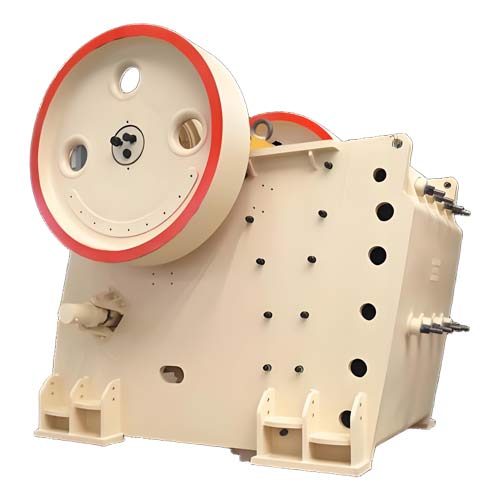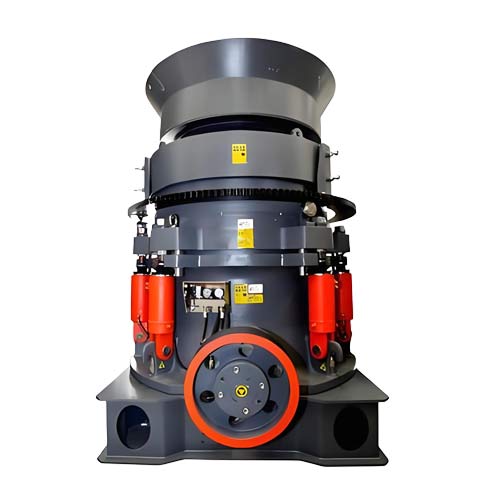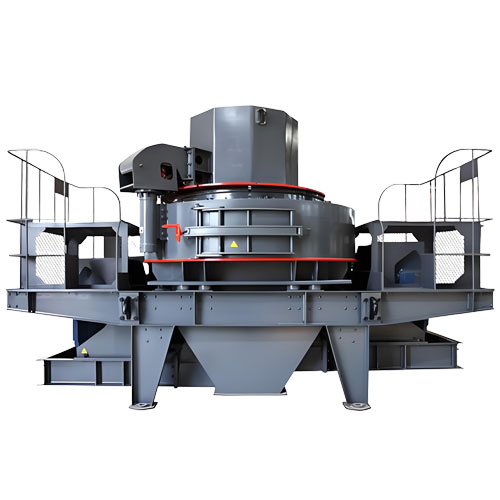


Rock Cone Crusher
Feed Opening: 100 - 350 mm (4" - 14")
Max. Feed Size: Up to 80% of the feed opening
Power Rating: 150 - 600 kW (200 - 800 HP)
Closed-Side Setting (CSS): 10 - 60 mm (0.4" - 2.4")
Product Introduction

A Rock Cone Crusher is a robust and versatile compression-type crusher designed for secondary, tertiary, and quaternary crushing stages in aggregate production, mining, and recycling operations. It reduces large-sized rocks and ores into smaller, precisely graded aggregates by compressing them between a stationary concave (bowl liner) and a gyrating mantle.
Unlike primary crushers that handle raw, blasted material, cone crushers are engineered for precision and efficiency, producing high-quality, cubical end products essential for construction and industrial applications. Their ability to handle hard and abrasive materials makes them an indispensable piece of equipment in any serious crushing operation.
Key Features & Advantages

-
1. Superior Crushing Efficiency & High Capacity
-
Advanced crushing chamber designs and high motor power combine to deliver exceptional throughput, maximizing your production output and reducing cost per ton.
-
-
2. Excellent Product Shape
-
The inter-particle comminution (rock-on-rock crushing) within the chamber produces well-shaped, cubical end products, which are highly valued in the asphalt and concrete industries.
-
-
3. Advanced Hydraulic System
- Hydraulic Adjustment: Allows operators to easily adjust the crusher setting under load to control product size and compensate for wear.
- Hydraulic Clearing & Overload Protection: Automatically clears the chamber in the event of a power failure or stall and protects the crusher from tramp metal or uncrushable material by releasing it, minimizing downtime and risk of damage.
-
4. Automated Control Systems
-
Modern cone crushers come with integrated automation systems (like ASRi™ or similar) that continuously monitor and optimize crusher performance in real-time, ensuring consistent product quality and peak efficiency.
-
-
5. Robust Design & Durability
-
Built with high-grade steel and heavy-duty components to withstand the harshest operating conditions and abrasive materials, ensuring long service life and reliability.
-
-
6. Multiple Chamber Options
-
Available with various crushing chamber profiles (e.g., coarse, medium, fine, extra-fine) to suit specific application needs and achieve desired product specifications.
-
-
7. Ease of Maintenance
-
Features like a hydraulic screw adjustment, replaceable liner seats, and easy-access components significantly reduce maintenance time and labor costs.
-
Technical Parameters Table
Note: The following table provides a general range for a medium-to-large sized cone crusher. Specific models will have precise specifications.
| Parameter | Description / Range |
| Feed Opening | 100 – 350 mm (4″ – 14″) |
| Max. Feed Size | Up to 80% of the feed opening |
| Power Rating | 150 – 600 kW (200 – 800 HP) |
| Production Capacity | 100 – 1,000 TPH (depending on closed-side setting and material) |
| Closed-Side Setting (CSS) | 10 – 60 mm (0.4″ – 2.4″) |
| Crushing Chambers | Multiple options (Coarse, Medium, Fine, Extra-Fine) |
| Weight | 15,000 – 60,000 kg (33,000 – 132,000 lbs) |
Industry Applications

Rock Cone Crushers are critical in a wide range of industries:
-
1. Aggregate Production: Producing high-quality sand, gravel, and crushed stone for use in concrete, asphalt, and road base construction.
-
2. Mining: Reducing run-of-mine ore to a size suitable for downstream processing in milling and beneficiation plants.
-
3. Quarrying: Crushing extracted rock (like limestone, granite, basalt) into specific sizes for various commercial and industrial uses.
-
4. Recycling: Processing construction and demolition waste (e.g., concrete, bricks) into reusable aggregates.
-
5. Industrial Minerals: Processing abrasive materials like silica sand, iron ore, and ferroalloys.
Compatible Equipment to Use With
A cone crusher is rarely used alone. It is a key component in a complete crushing and screening circuit and is typically paired with:
-
1. Primary Jaw Crusher or Gyratory Crusher: To perform the initial size reduction of large rocks.
-
2. Vibrating Grizzly Feeder: To regulate the feed rate and remove fine material before the crushing chamber.
-
3. Vibrating Screen: To separate the crushed material into different product sizes. Oversized material is often sent back to the cone crusher for re-crushing (closed-circuit operation).
-
4. Conveyor Belts: To transport material between the different stages of the crushing plant.
-
5. Hopper & Feed Bin: To ensure a consistent and steady supply of material to the crusher.
FAQ: Rock Cone Crusher
Q1: What is the main difference between a standard and a short-head cone crusher?
A: A standard cone crusher has a larger feed opening and a coarser crushing chamber, making it ideal for secondary crushing. A short-head cone crusher has a steeper head angle and a smaller feed opening, designed for finer crushing and producing smaller product sizes in tertiary or quaternary stages.
Q2: How often do the mantles and bowl liners need to be replaced?
A: Wear life depends entirely on the abrasiveness of the material being crushed, the throughput, and the crusher settings. It can range from a few weeks for highly abrasive material to over a year for less abrasive rock. Regular inspection is key.
Q3: Can a cone crusher handle damp or clay-rich material?
A: Cone crushers are best suited for dry to moderately wet, hard rock. Sticky or clay-rich material can cause chamber packing and clogging, significantly reducing efficiency and increasing the risk of crusher stall. Pre-screening to remove fines is often necessary in such conditions.
Q4: What does “closed-side setting” (CSS) mean?
A: The CSS is the smallest gap between the mantle and the concave at the bottom of the crushing chamber. It is the primary factor determining the crusher’s product size. A smaller CSS produces a finer product.
Q5: Why is automation important for a cone crusher?
A: Automation systems maintain optimal crusher performance by constantly adjusting the CSS and other parameters to compensate for wear and changes in feed material. This ensures consistent product quality, maximizes throughput, and protects the machine from damage.
Inquiry
Please leave us your requirements, we will contact you soon.





